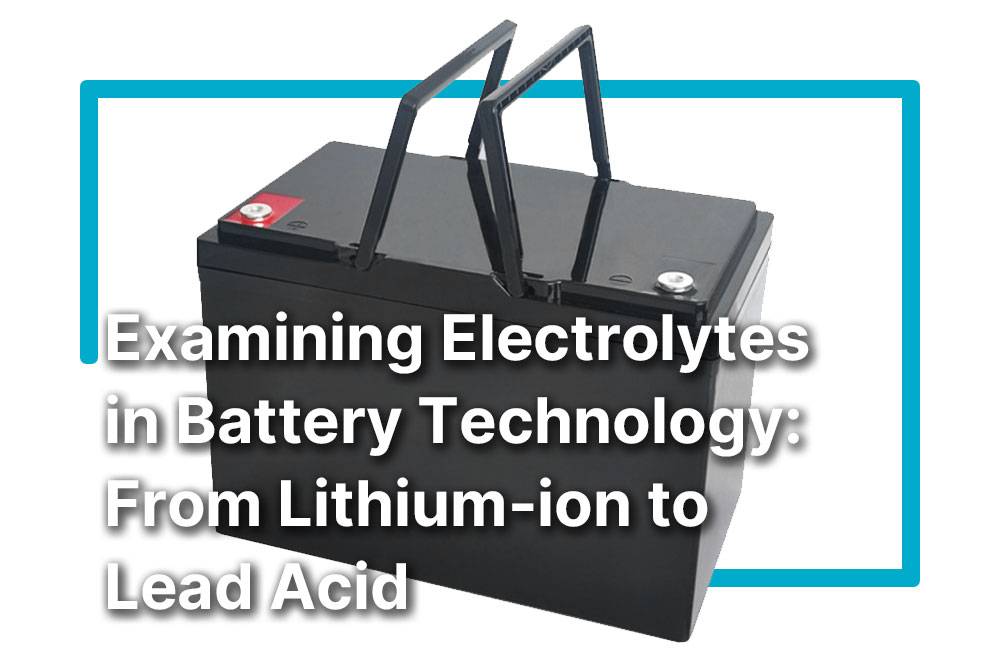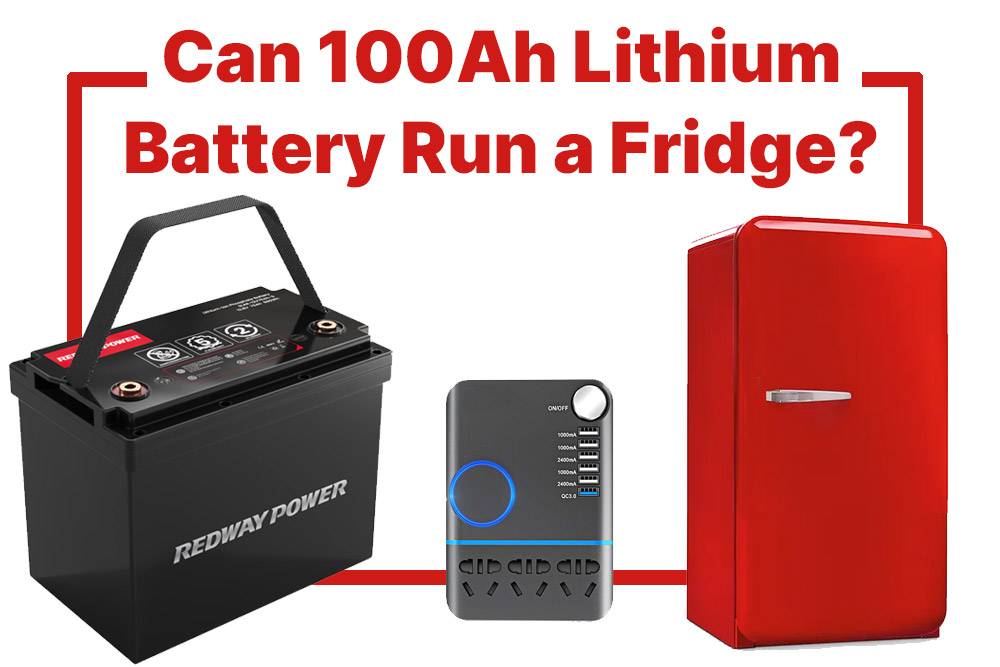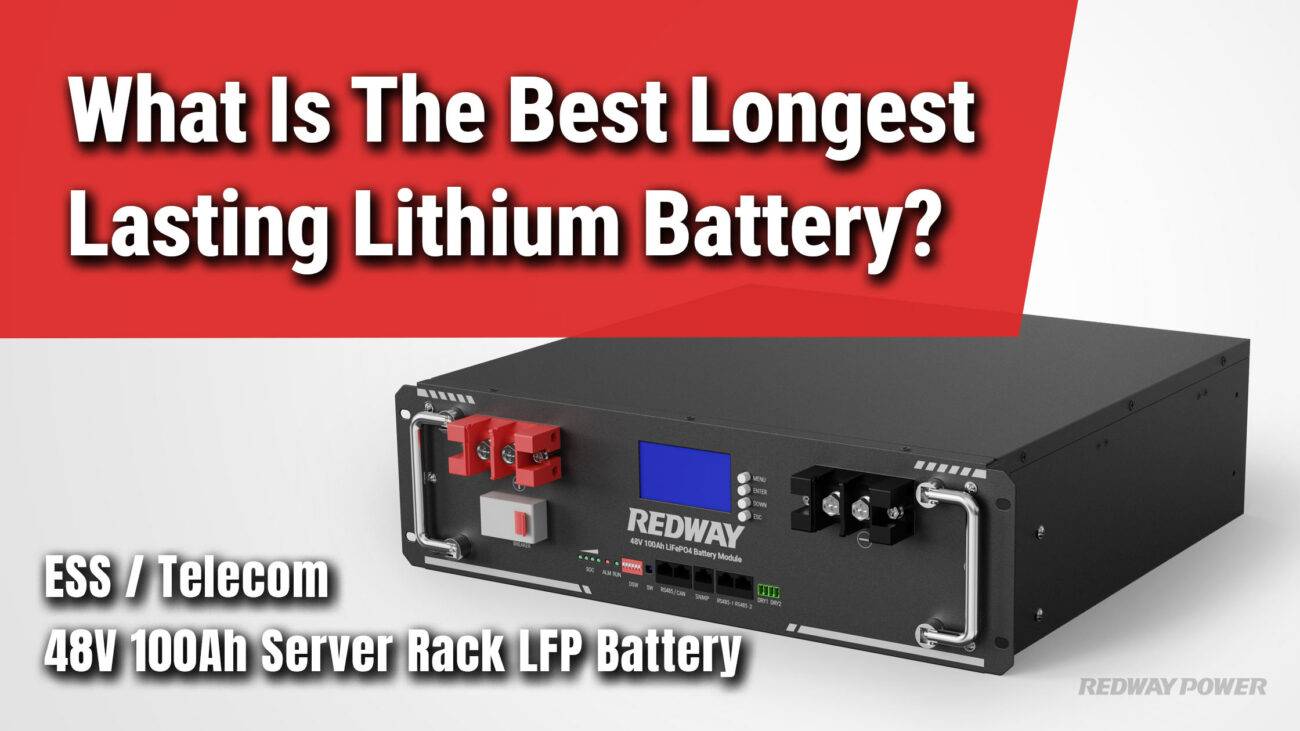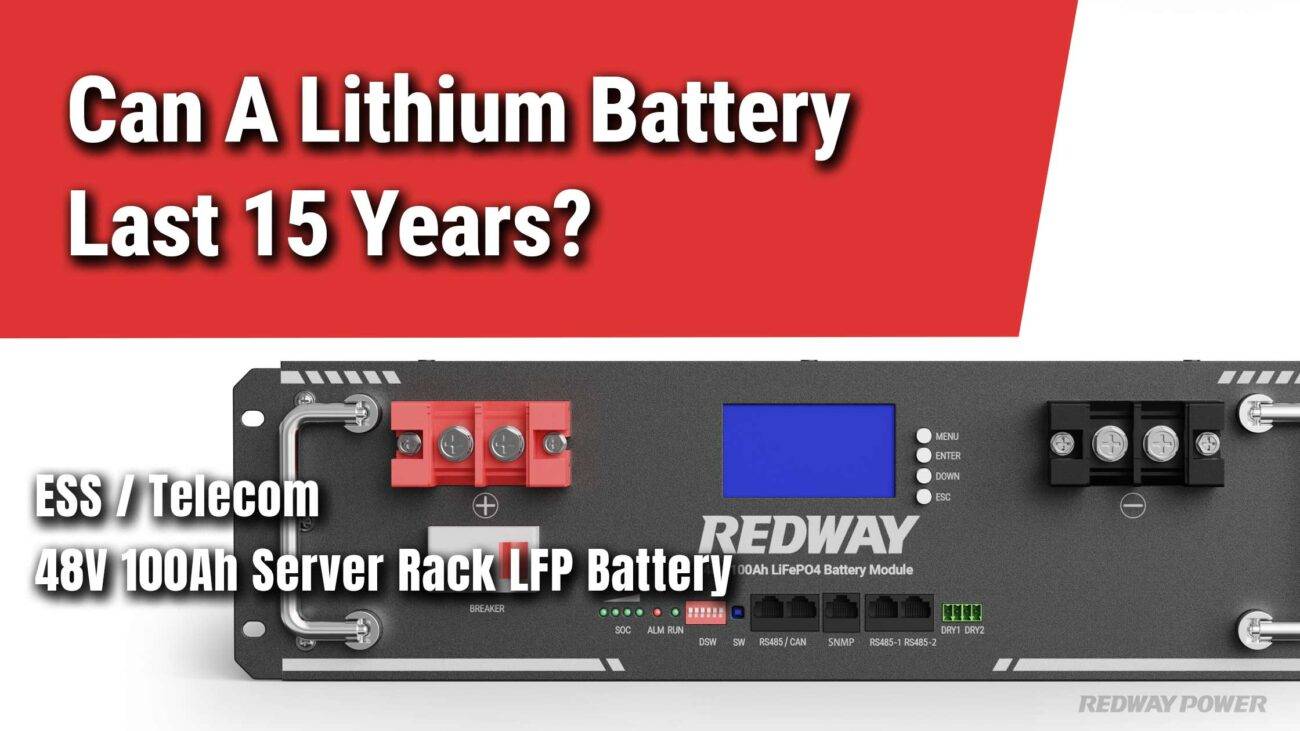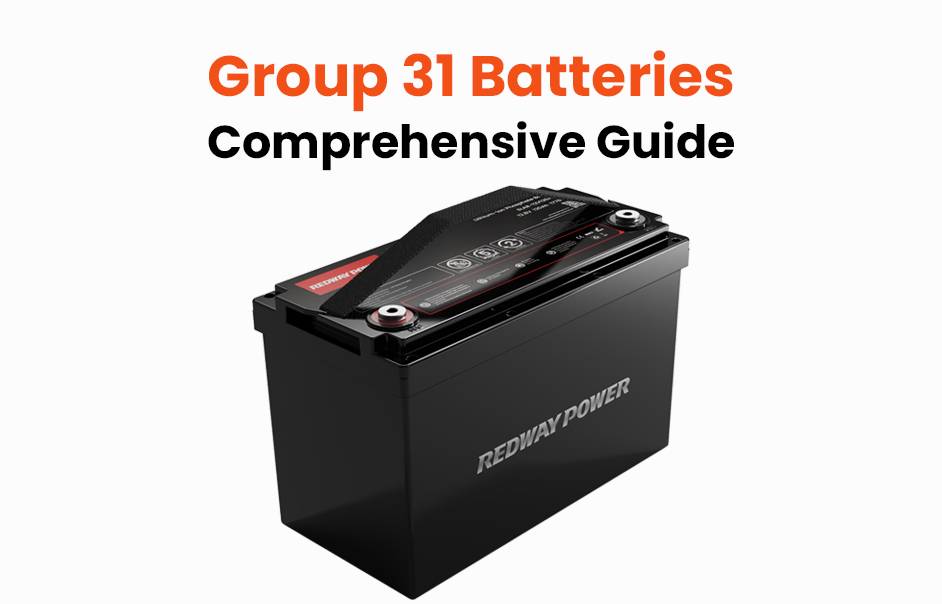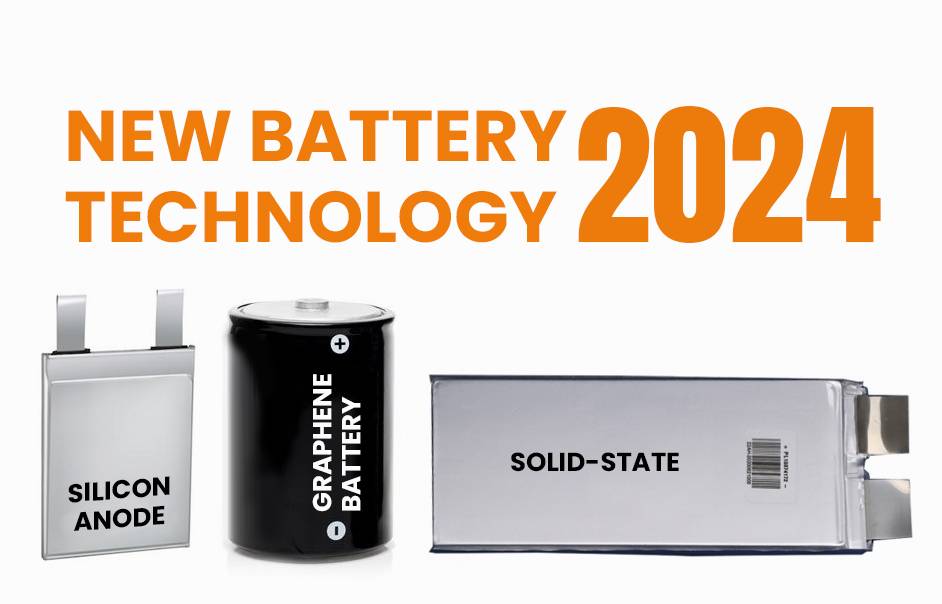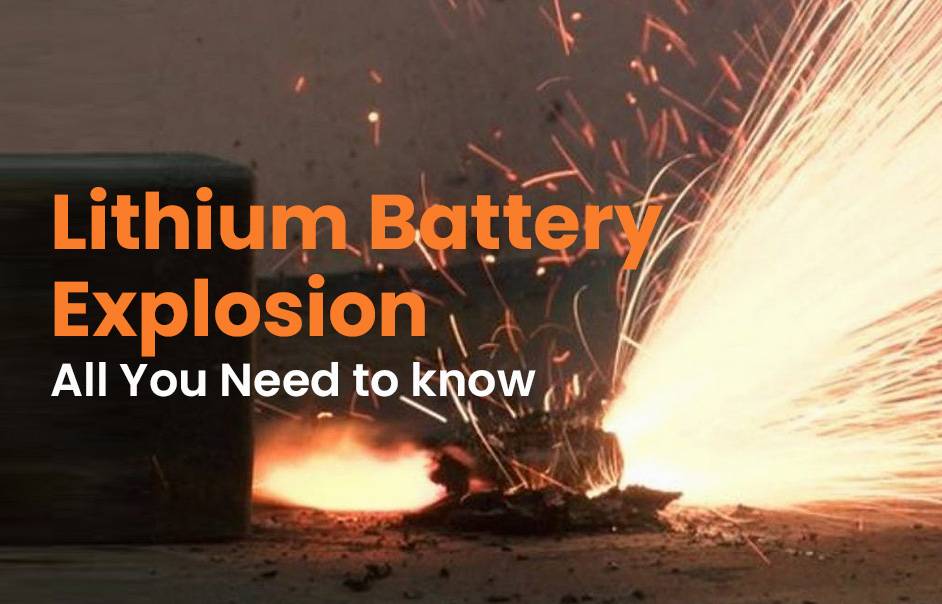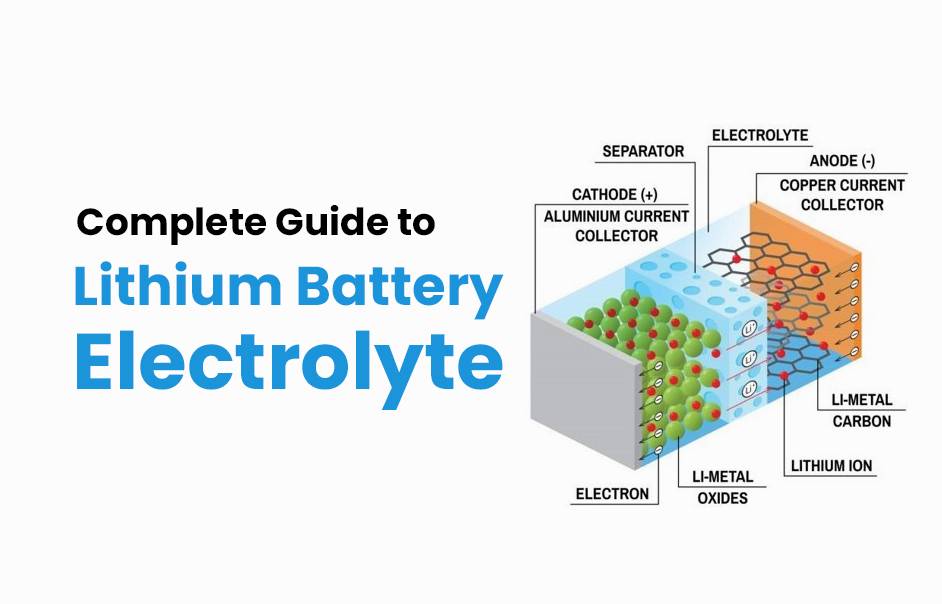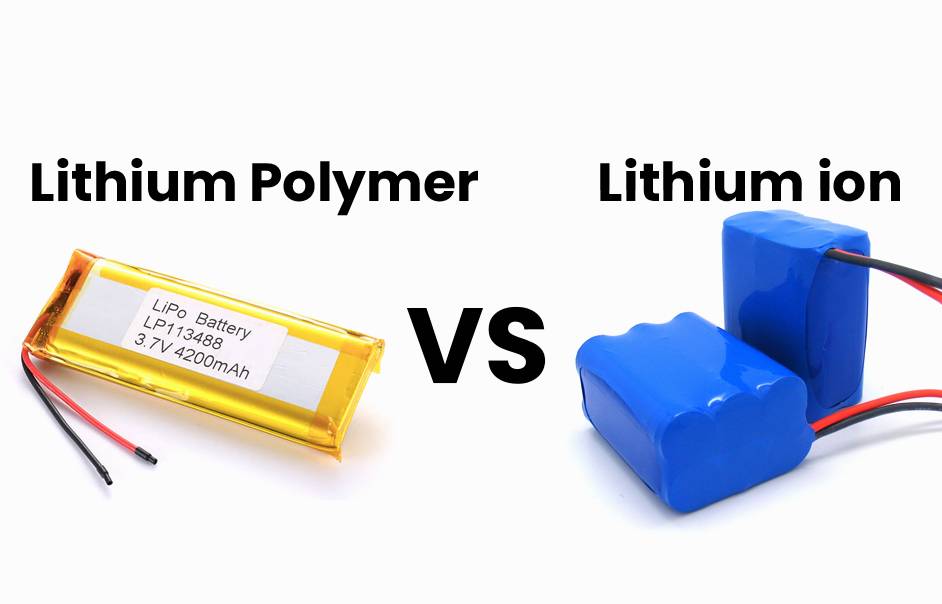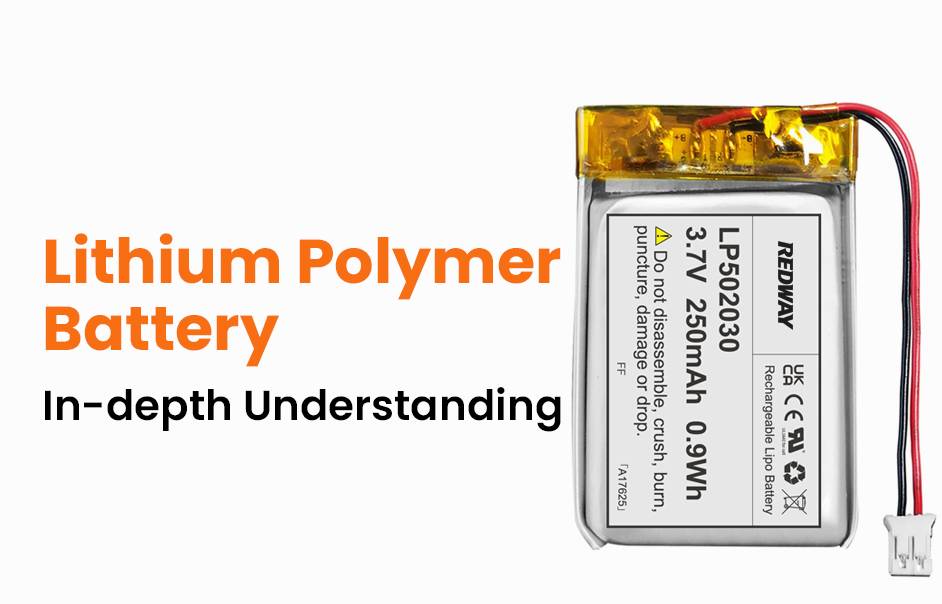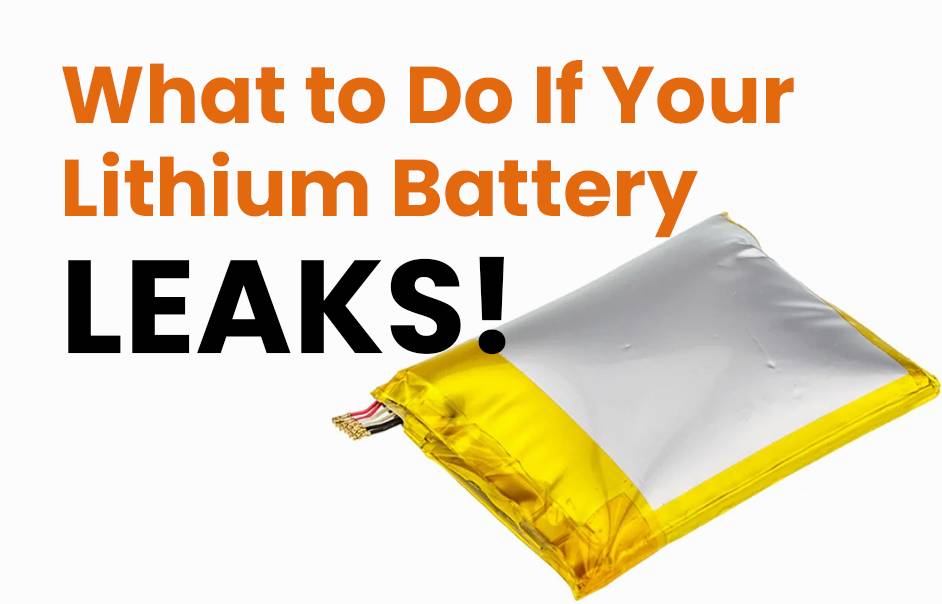- Rack-mounted Lithium Battery
- Golf Cart Lithium Battery
-
Golf Cart Lithium Battery
- 36V 50Ah (for Golf Carts)
- 36V 80Ah (for Golf Carts)
- 36V 100Ah (for Golf Carts)
- 48V 50Ah (for Golf Carts)
- 48V 100Ah (Discharge 100A for Golf Carts)
- 48V 100Ah (Discharge 150A for Golf Carts)
- 48V 100Ah (Discharge 200A for Golf Carts)
- 48V 120Ah (for Golf Carts)
- 48V 150Ah (for Golf Carts)
- 48V 160Ah (Discharge 100A for Golf Carts)
- 48V 160Ah (Discharge 160A for Golf Carts)
-
Golf Cart Lithium Battery
- Forklift Lithium Battery
- 12V Lithium Battery
- 24V Lithium Battery
- 36V Lithium Battery
- 48V Lithium Battery
-
48V LiFePO4 Battery
- 48V 50Ah
- 48V 50Ah (for Golf Carts)
- 48V 60Ah (8D)
- 48V 100Ah (8D)
- 48V 100Ah
- 48V 100Ah (Discharge 100A for Golf Carts)
- 48V 100Ah (Discharge 150A for Golf Carts)
- 48V 100Ah (Discharge 200A for Golf Carts)
- 48V 150Ah (for Golf Carts)
- 48V 160Ah (Discharge 100A for Golf Carts)
- 48V 160Ah (Discharge 160A for Golf Carts)
-
48V LiFePO4 Battery
- 60V Lithium Battery
-
60V LiFePO4 Battery
- 60V 20Ah
- 60V 30Ah
- 60V 50Ah
- 60V 50Ah (Small Size / Side Terminal)
- 60V 100Ah (for Electric Motocycle, Electric Scooter, LSV, AGV)
- 60V 100Ah (for Forklift, AGV, Electric Scooter, Sweeper)
- 60V 150Ah (E-Motocycle / E-Scooter / E-Tricycle / Tour LSV)
- 60V 200Ah (for Forklift, AGV, Electric Scooter, Sweeper)
-
60V LiFePO4 Battery
- 72V~96V Lithium Battery
- E-Bike Battery
- All-in-One Home-ESS
- Wall-mount Battery ESS
-
Home-ESS Lithium Battery PowerWall
- 24V 100Ah 2.4kWh PW24100-S PowerWall
- 48V 50Ah 2.4kWh PW4850-S PowerWall
- 48V 50Ah 2.56kWh PW5150-S PowerWall
- 48V 100Ah 5.12kWh PW51100-F PowerWall (IP65)
- 48V 100Ah 5.12kWh PW51100-S PowerWall
- 48V 100Ah 5.12kWh PW51100-H PowerWall
- 48V 200Ah 10kWh PW51200-H PowerWall
- 48V 300Ah 15kWh PW51300-H PowerWall
PowerWall 51.2V 100Ah LiFePO4 Lithium Battery
Highly popular in Asia and Eastern Europe.
CE Certification | Home-ESS -
Home-ESS Lithium Battery PowerWall
- Portable Power Stations
Is Lithium Battery Good For Electric Motorcycle? FAQs
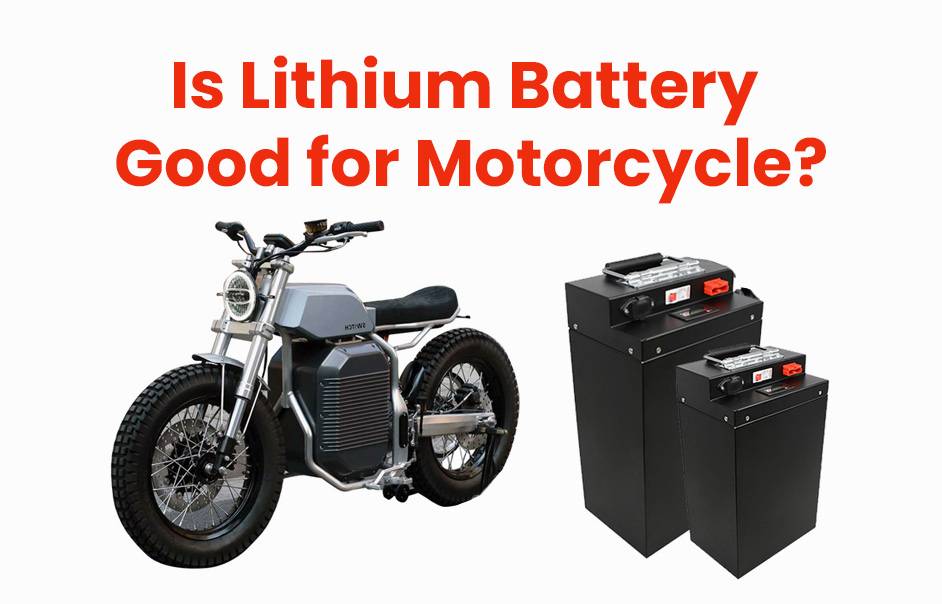
What is a Lithium Battery and How Does it Work?
The Benefits of Using a Lithium Battery for Motorcycles
Lithium batteries have become a go-to choice for motorcycle enthusiasts, offering a range of benefits over traditional lead-acid counterparts. Here’s a streamlined breakdown of why opting for a lithium battery is a game-changer for your ride.
- Lightweight Advantage:
- Key Point: Lithium batteries are incredibly light, enhancing overall motorcycle performance and handling.
- Impact: Experience improved acceleration and maneuverability on the road with the reduced weight of a lithium battery.
- Extended Lifespan:
- Key Point: Lithium batteries outlast lead-acid counterparts, easily surpassing 10 years with proper care.
- Impact: Enjoy fewer replacements and less maintenance hassle, providing long-term reliability for motorcycle owners.
- Impressive Charge Retention:
- Key Point: Lithium batteries maintain charge for extended periods without voltage drop.
- Impact: Confidently start your motorcycle, even after weeks or months of inactivity.
- High Cranking Power:
- Key Point: Lithium batteries deliver strong bursts of energy during startup, crucial for high-performance engines or cold weather conditions.
- Impact: Ensure reliable and powerful startups, enhancing the overall performance of your motorcycle.
- Environmental Friendliness:
- Key Point: Lithium batteries are eco-friendly, lacking harmful substances found in traditional options.
- Impact: Contribute to pollution reduction and promote sustainability by choosing a lithium battery.
In Conclusion: Switching to a lithium battery is a wise choice, offering reduced weight, extended lifespan, superior charge retention, higher cranking power, and environmental friendliness. Whether aiming to enhance bike performance or cut long-term maintenance costs, a lithium battery proves to be a beneficial investment for motorcycle enthusiasts.
Common Myths and Misconceptions about Lithium Batteries
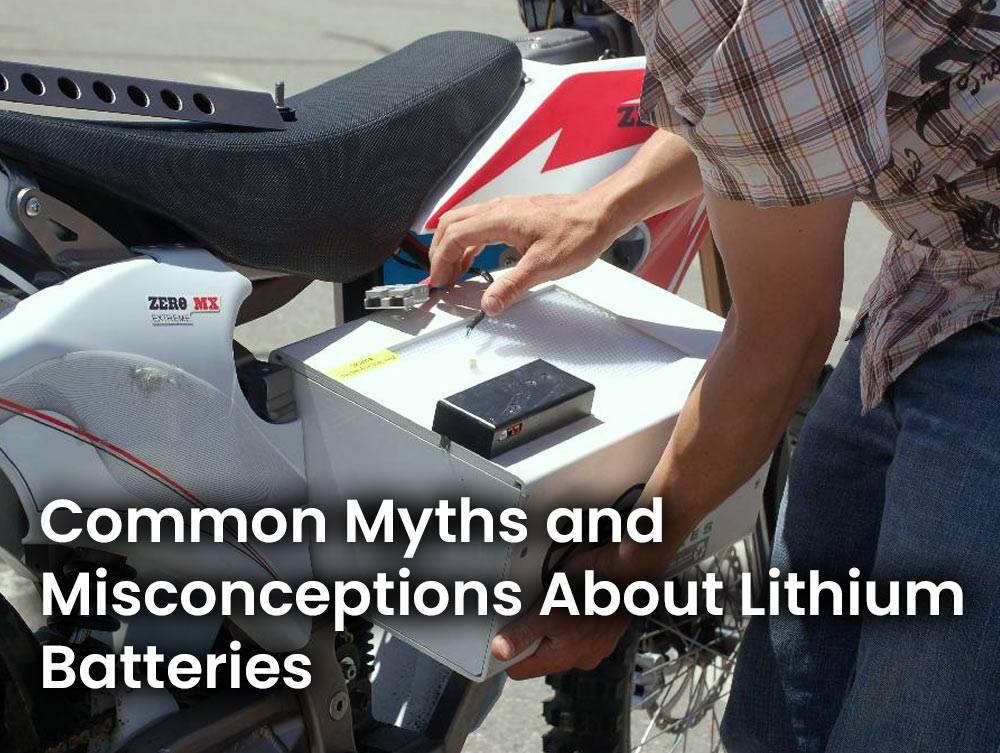
Factors to Consider Before Switching to a Lithium Battery
Before transitioning to a lithium battery for your motorcycle, careful consideration of specific factors is essential. This ensures a seamless switch and optimal performance for your beloved ride.
- Compatibility Check:
- Key Point: Verify if your motorcycle is compatible with a lithium battery, especially older models.
- Impact: Some bikes may not handle the higher voltage output of lithium batteries, necessitating a review of your owner’s manual or consultation with an expert.
- Weight Difference:
- Key Point: Consider the weight disparity between lithium and lead-acid batteries.
- Impact: While lithium batteries are lighter, abrupt switching can affect the balance and stability of your bike, particularly if accustomed to riding with a heavier battery.
- Cost Evaluation:
- Key Point: Assess the upfront cost of lithium batteries compared to lead-acid counterparts.
- Impact: Despite the initial expense, the longer lifespan and reduced maintenance costs of lithium batteries over time can make them a cost-effective choice.
- Temperature Sensitivity:
- Key Point: Recognize the impact of extreme temperatures on lithium battery performance.
- Impact: Ensure your chosen lithium battery has suitable thermal management features, especially if residing in areas with very high or low temperatures throughout the year.
- Individual Consideration:
- Key Point: Acknowledge that each motorcycle is unique, and what works for one rider may not work for another.
- Impact: Personalized assessment ensures the chosen battery aligns with your bike’s specifications and your riding preferences.
By addressing these factors, you can make an informed decision about transitioning from a traditional lead-acid battery to a lithium one, tailoring the switch to your motorcycle’s needs and ensuring a smooth ride on the road.
Proper Maintenance Tips for Ensuring Longevity of Your Lithium Battery
Ensuring the longevity and optimal performance of your motorcycle’s lithium battery is vital. Follow these straightforward maintenance tips to maximize its lifespan and keep your bike running smoothly.
- Keep it Charged:
- Key Point: Regularly charge your lithium battery to prevent complete discharges.
- Impact: Unlike lead-acid batteries, lithium batteries dislike being fully discharged, so avoid letting them sit idle for extended periods without a charge.
- Use a Compatible Charger:
- Key Point: Always use a charger specifically designed for lithium batteries.
- Impact: Using an incompatible charger can lead to overheating or overcharging, causing potential harm to the battery’s health.
- Store in a Cool Environment:
- Key Point: Keep your lithium battery in a cool and dry place, away from extreme temperatures.
- Impact: Storing it in optimal conditions, free from direct sunlight or freezing conditions, ensures better overall performance and lifespan.
- Avoid Deep Discharges:
- Key Point: Minimize deep discharges to extend your lithium battery’s lifespan.
- Impact: While occasional deep discharges may be tolerable, frequent deep drains can significantly shorten the battery’s overall life.
- Inspect Regularly:
- Key Point: Regularly check your lithium battery for signs of damage or wear.
- Impact: Detecting issues early, such as loose connections or corrosion, allows for timely attention or repair, ensuring reliable starts every time.
By adhering to these maintenance tips, you’ll enhance the longevity of your motorcycle’s lithium battery, providing you with consistent and reliable performance whenever you hit the road.
Alternatives to Lithium Batteries for E-Motorcycle
While lithium batteries offer various advantages, they might not be the ideal choice for every motorcycle owner. Exploring alternative options is crucial to align with your specific needs. Here are some alternatives to lithium batteries worth considering:
- Lead-Acid Batteries:
- Key Point: Known for affordability and durability, lead-acid batteries are traditional and widely used.
- Impact: They may be bulkier and heavier than lithium batteries but remain a cost-effective and reliable choice.
- Gel Batteries:
- Key Point: Gel batteries use a spill-proof gel electrolyte, offering maintenance-free operation.
- Impact: While recharging may take longer, they provide good starting power and are suitable for certain applications.
- AGM (Absorbent Glass Mat) Batteries:
- Key Point: Similar to gel batteries, AGM batteries are spill-proof and maintenance-free.
- Impact: They offer higher cranking amps, enhancing starting power, making them suitable for various motorcycles.
- Lithium Iron Phosphate (LiFePO4) Batteries:
- Key Point: A variation of lithium technology designed for high-amperage demands in motorcycles and other vehicles.
- Impact: LiFePO4 batteries offer benefits such as lightweight design and improved performance for specific applications.
Conclusion: Choosing between a lithium battery and an alternative option depends on personal preferences and motorcycle requirements. While lithium batteries have numerous benefits, factors like budget, weight, size, and compatibility must be considered. Prioritize maintenance to maximize the lifespan of any chosen battery type and align it with your riding preferences and budget constraints.
FAQs
How Do Lithium Batteries Keep Riders Informed About Battery Health?
What Warranty Coverage Comes with Lithium Motorcycle Batteries?
What Advanced Features Do Lithium Motorcycle Starter Batteries Offer?
What Advanced Capabilities Do LithiumHub’s Motorcycle Batteries Provide?
More FAQs
Is the lithium ion battery worth it for a motorcycle?
Lithium-ion batteries are indeed a worthwhile investment for motorcycles. Their lightweight build, high energy density, and extended lifespan outshine traditional lead-acid batteries. With improved performance and reduced maintenance, they offer superior value.
Can you put a lithium battery in any motorcycle?
In most instances, yes, you can integrate a lithium battery into any motorcycle. However, it’s crucial to ensure compatibility in terms of voltage and dimensions with your bike’s electrical system and battery compartment. For older motorcycles with generators or external voltage regulators predating the mid-1990s, a modern electronic voltage regulator is necessary to prevent overcharge damage.
How many years does a lithium motorcycle battery last?
Typically, a lithium motorcycle battery can endure anywhere from 3 to 5 years or even longer, contingent on factors like usage habits, maintenance practices, and environmental circumstances. Manufacturers generally expect a minimum lifespan of around 5 years or 2,000 charging cycles. With proper care and usage conditions, some lithium-ion batteries can even surpass 3,000 cycles.
Does a lithium motorcycle battery need a special charger?
Yes, lithium motorcycle batteries demand a charger specifically tailored to lithium-ion batteries to ensure safe and efficient charging. Their charging requirements, including voltage and pattern, differ from those of lead-acid batteries. Thus, a standard alternator lacks the necessary voltage and pattern, necessitating a specialized charger.
Can I charge a lithium motorcycle battery with a normal charger?
It’s ill-advised to charge a lithium motorcycle battery using a standard charger designed for lead-acid batteries. Such chargers may not deliver the correct charging profile, posing a risk of potential damage to the lithium-ion battery.
Can you jump start a motorcycle with a lithium battery?
Yes, you can jump start a motorcycle equipped with a lithium battery, but exercising caution and adhering to proper jump-starting protocols is crucial to prevent harm to the battery or electrical system. Lithium battery jump starters, portable equipment designed for this purpose, offer a safer and more efficient alternative to bulkier lead-acid jump starters, especially in hot weather conditions where overheating is less likely.
What is the best lithium battery for a motorcycle?
Selecting the best lithium battery for your motorcycle hinges on various factors like size, power requirements, and budget. Brands such as Shorai, Antigravity, and Ballistic are esteemed for their lithium motorcycle batteries. Explore the top options available and compare features to find the perfect fit for your ride!
Can you jump start lithium-ion batteries?
Indeed, you can jump start lithium-ion batteries, but it’s imperative to exercise caution and employ proper jump-starting procedures to avoid damage or safety risks. Mishandling lithium-ion batteries can lead to overheating, fire, or explosion. Prioritize safety and handle with care.
Can you charge a lithium battery with a stator?
Charging a lithium battery with a stator is feasible, but it necessitates a regulator/rectifier to regulate the charging voltage within the lithium-ion battery’s safe range. Ensuring proper voltage control is vital to safeguard the battery from potential damage.
Is lithium battery good for Harley?
Certainly, lithium batteries constitute a commendable option for Harley motorcycles, offering advantages like lightweight design, enhanced performance, and extended lifespan compared to conventional lead-acid batteries. Experience quicker starts and superior performance with a lithium battery tailored for your Harley.
Can I replace lead-acid battery with lithium ion in motorcycle?
Yes, replacing a lead-acid battery with a lithium-ion counterpart in a motorcycle is feasible, provided compatibility checks and potential adjustments to the electrical system are undertaken. Embrace the benefits of lithium technology, including reduced weight, improved performance, and longer lifespan, making it an increasingly popular choice for motorcycle enthusiasts.
Why lithium motorcycle batteries are better?
Lithium motorcycle batteries outshine traditional lead-acid batteries due to their lightweight construction, higher energy density, prolonged lifespan, and superior performance across diverse environmental conditions. Enjoy the perks of increased energy density and reduced weight, enhancing your motorcycle’s overall efficiency and performance.
What is the biggest disadvantage of a lithium-ion battery?
The primary drawback of lithium-ion batteries lies in their sensitivity to overcharging, high temperatures, and physical damage, posing safety hazards such as thermal runaway or diminished lifespan. Handle lithium-ion batteries with care to mitigate risks of overheating, fire, or explosion.
Is AGM or lithium better for motorcycles?
Lithium batteries generally surpass AGM (Absorbent Glass Mat) batteries for motorcycles, offering benefits like reduced weight, higher energy density, and extended lifespan. While AGM batteries boast reliability and power, lithium batteries excel in longevity and performance retention over time. Choose the battery that aligns with your specific needs and preferences.
Is lithium or AGM battery better for motorcycles?
Lithium batteries typically outperform AGM (Absorbent Glass Mat) batteries in motorcycles due to their superior performance and longer lifespan, despite being initially more expensive. Lithium batteries offer advantages like lighter weight and increased starting power, making them a preferred choice. Nonetheless, AGM batteries remain a solid option for motorcycles and ATV machines.
Are Harley batteries AGM or lithium?
Harley-Davidson motorcycles generally come equipped with AGM (Absorbent Glass Mat) batteries as standard. While AGM batteries are the default choice, some riders opt to upgrade to lithium batteries for enhanced performance.
Which is better lead-acid battery or lithium ion battery motorcycle?
In most cases, lithium-ion batteries surpass lead-acid batteries for motorcycles due to their lighter weight, higher energy density, and longer lifespan. While lithium-ion batteries may cost around 30% more than quality lead-acid batteries, they offer double the lifespan, weigh two-thirds less, and provide better cranking ability.
Can I replace my AGM batteries with lithium?
Yes, you can replace AGM batteries with lithium batteries in motorcycles, but ensure compatibility and potentially make adjustments to the electrical system. Swapping an AGM battery bank for a lithium battery is feasible and can provide equivalent power with fewer batteries. However, compatibility with the Battery Management System, battery charger, and solar regulator must be considered.
What type of battery is best for electric motorcycle?
Lithium-ion batteries are widely regarded as the best choice for electric motorcycles due to their lightweight design, high energy density, and extended lifespan. Manufacturers predominantly utilize lithium-ion batteries for electric motorcycles due to their quick recharge times and longevity.
What is the best battery for EV motorcycle?
The ideal battery for an electric motorcycle depends on various factors including specifications, budget, and performance requirements. Lithium-ion batteries from reputable brands like Panasonic, LG Chem, or Samsung are often favored for their reliability and quality.
What is the new battery better than lithium?
Emerging battery technologies such as solid-state batteries or sodium batteries show promise in surpassing lithium-ion batteries in terms of energy density, safety, and environmental impact. While still in the research and development phase, sodium batteries, with their easy availability and abundance, present a potential alternative to lithium-ion batteries.
How long does it take to charge a lithium ion motorcycle battery?
Charging times for lithium-ion motorcycle batteries are notably fast, with a discharged battery typically fully recharged within 1-2 hours. In comparison, a discharged lead-acid battery requires over 12 hours to reach full capacity. Lithium-ion batteries offer superior reliability and a longer service life compared to lead-acid batteries.
Can you use a trickle charger on a lithium motorcycle battery?
Trickle charging is not recommended for lithium batteries as they do not support it in the same way lead-acid batteries do. Instead, periodic 30-minute charges every 2 months are suggested. When charging, ensure the current does not exceed 2C (twice the battery capacity) to prevent damage.
How long will the motorcycle battery last in winter/cold weather?
How often should I start my motorcycle to keep the battery charged?














